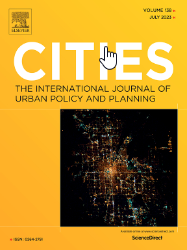
The Environmental Kuznets Curve inside a city region: What is the role of suburbanization in decoupling air pollution from growing income?
Air pollution is purported to drive migration from cities to the suburbs, fueling urban sprawl. We aim to explore the relationship between pollution and economic development in the spatial framework of a suburbanizing city region using the example of Warsaw, Poland. To account for spatial dependence in data, we apply the Spatial Lag model to estimate the effect of local GDP on PM2.5 concentration levels in 314 municipalities. We find evidence for the decoupling of local GDP and air pollution, lending support to the Environmental Kuznets Curve (EKC) hypothesis. Next, we verify the role of air pollution in explaining the subsequent change in average personal income. The indirect effect of pollution turns out to be especially important, suggesting that the high environmental quality of municipalities located close to polluted urban centres facilitate such migrations. The decoupling observed at the city region level is partially driven by the in-migration of relatively wealthy urbanites to these suburban municipalities. In order to prevent the worsening of environmental quality at the regional level, policymakers should take into account the spatial dependence of air pollution and the spatial heterogeneity of its relation with development in order to effectively reduce incentives for suburbanization.




